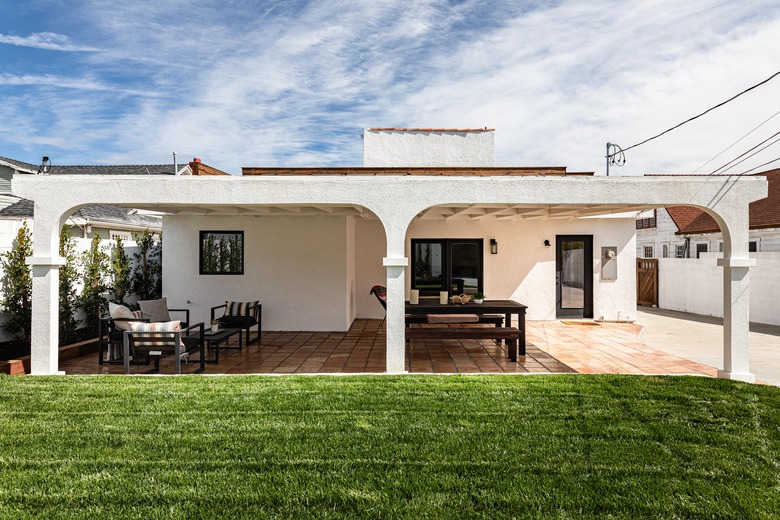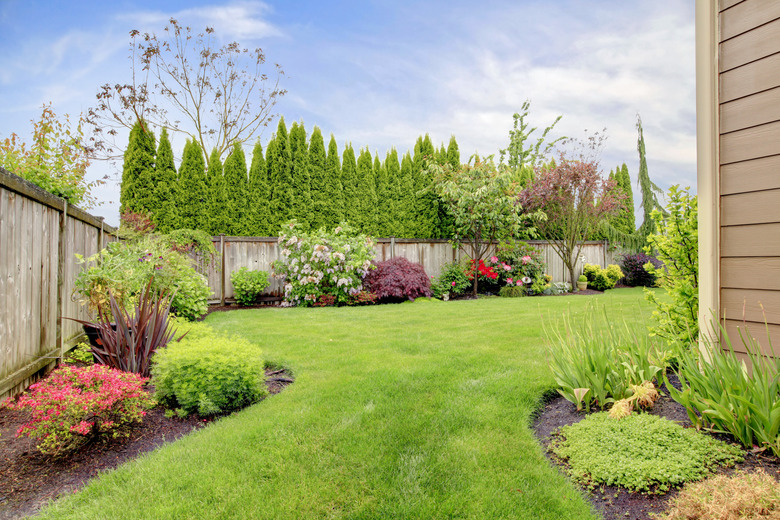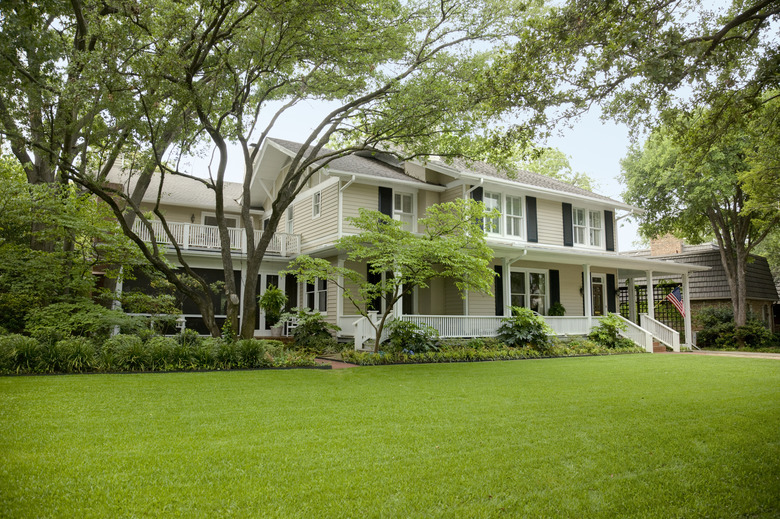Lawn Care Fertilizer Do's And Don'ts
We may receive a commission on purchases made from links.
There's nothing quite like the verdant green of a lush, healthy lawn, but the perfect lawn doesn't just grow on its own. It requires ample sunshine as well as lawn care in the form of water, fertilizer, and regular mowing. In fact, there are many do's and don'ts when it comes to lawn care. It's especially important when it comes to fertilizing because improper fertilization can do more harm than good.
1. Mow Often (But Not Too Often)
1. Mow Often (But Not Too Often)
It's important to mow your yard regularly. Since you may want to avoid using synthetic chemical fertilizers more than twice a year because they can burn your grass, mulched clippings are the perfect natural fertilizer to add nutrients for the rest of the year. Mowing once a week (or every other week, depending on the grass type and time of year) will stimulate growth and keep the grass ends healthy. Mowing more than that will make it hard for the grass plants to heal between cuttings, making them susceptible to disease. When you're ready for your biannual chemical fertilization session, be sure to mow first, as this will help the lawn absorb the fertilizer more efficiently.
Also, don't cut the lawn too short or cut more than a third of its height at once because this can shock the grass and damage the root system. The specific height will vary based on the type of grass, but the average height is around 3 inches.
Don't be afraid to hire a reputable lawn care service if you can't keep up with this schedule, if you don't want to invest in a quality lawn mower or if you don't want to bother properly maintaining the mower by adding sufficient oil and sharpening the mower blade when it has dulled.
2. Choose the Right Fertilizer
2. Choose the Right Fertilizer
Fast-acting fertilizers can burn your grass, whereas a slow-release fertilizer or organic fertilizer, such as manure-based fertilizer, bone meal or fish meal, will benefit your yard for months. Apply it with a mechanical spreader to make sure each part of the lawn gets an even amount of fertilizer and always keep bone and fish meal fertilizers away from pets because it can make them sick.
Grass has different needs for different seasons, so you should use two different fertilizers: one for just before the summer growing season and one for fall. Fertilizers that are higher in nitrogen are perfect for spring to prepare for upcoming warm weather. In the fall, use fertilizers with more phosphorous and potassium to encourage root growth.
3. Perform a Soil Test
3. Perform a Soil Test
A major lawn care "do" that many people ignore is getting a soil test. These cost as little as $10 and are available from most nurseries or your local Cooperative Extension Service. Knowing exactly what your lawn needs to grow healthy can save you money and prevent damage to your grass due to overfertilizing. For example, while it's true that most lawns need more phosphorous and potassium than nitrogen in fall, if you find that your lawn is low in nitrogen but already high in phosphorus, you can buy a fertilizer that is better suited to your grass's current state than a typical lawn.
4. Fertilize Your Lawn Based on Needs
4. Fertilize Your Lawn Based on Needs
Grass grown in shade or grass that has low foot traffic needs less fertilizer than grass in direct sunlight or with high foot traffic. Typically, you'll need to use twice as much fertilizer on grass in full sun than you would in an area that is shaded. Similarly, you'll want to adjust your fertilization amount based on how often people walk on your lawn.
If you are fertilizing an area that needs varying amounts of fertilizer, set your mechanical spreader for the right amount of fertilizer for the shady areas and then go over the sunny and the shady-but-highly-trafficked parts of your yard twice. Always sweep excess fertilizer from sidewalks and driveways to prevent it from running off into storm drains.
5. Aerate for Proper Lawn Care
5. Aerate for Proper Lawn Care
Core aerating (or the process of pulling small plugs of soil from your lawn) helps air, water, and fertilizer to effectively reach the root system. Depending on the size of your yard, you may be able to do this yourself, but most people prefer to hire a lawn service to do it because this task can take a long time and needs to be done properly. For best results, do this just before both lawn fertilization sessions.
6. Don’t Overwater the Grass
6. Don't Overwater the Grass
Yes, grass needs water to grow, and most people can't just rely on rainwater all year, but too much water can make your lawn soggy and can cause fungal diseases to grow. Ideally, give your grass a deep watering once a week (more in extremely hot weather) before 10 a.m. so the water can be absorbed into the soil before it evaporates. During the rainy season, you may want to turn off your sprinklers entirely to prevent overwatering.
6. Avoid Overfertilizing Your Lawn
6. Avoid Overfertilizing Your Lawn
Just like lawn mowing and watering, you can damage your grass when you over-fertilize. Lawn clippings can provide a gentle, natural fertilizer throughout the year, but some commercial fertilizers should not be applied more than twice a year, or you may burn your yard, causing it to turn yellow. Use a slow-release or organic fertilizer once in May and again in September. Similarly, always follow manufacturer instructions to avoid using too much fertilizer.
7. Don’t Use Weed and Feed
7. Don't Use Weed and Feed
Avoid buying fertilizers with pest control or weed killers. While it seems convenient to fertilize while killing bugs and weeds, it's a bad idea to spread poisons for weeds and bugs you don't have.
As an example, weed and feed products tend to target plants that have not yet emerged, such as crabgrass, or broadleaf plants that have already emerged, such as dandelions. If you haven't seen any crabgrass for multiple seasons, you may not even have any weed seeds in your garden, and applying herbicide needlessly can stress out your lawn, especially if you're reseeding any bare spots.
Additionally, using herbicide needlessly can harm the environment, particularly if it drains off your lawn and into the storm drain. On the other hand, when it comes to broadleaf plants, it is more effective and less harmful to both your grass and the environment to spot-spray individual plants rather than the whole lawn.
As for insecticides, because lawn pests vary so much from region to region, you'll very likely be using pesticides that don't even apply to your region and may even be missing the ones for the pests in your area. Again, it's better to simply buy products to deal with the specific problem insects in your area.


